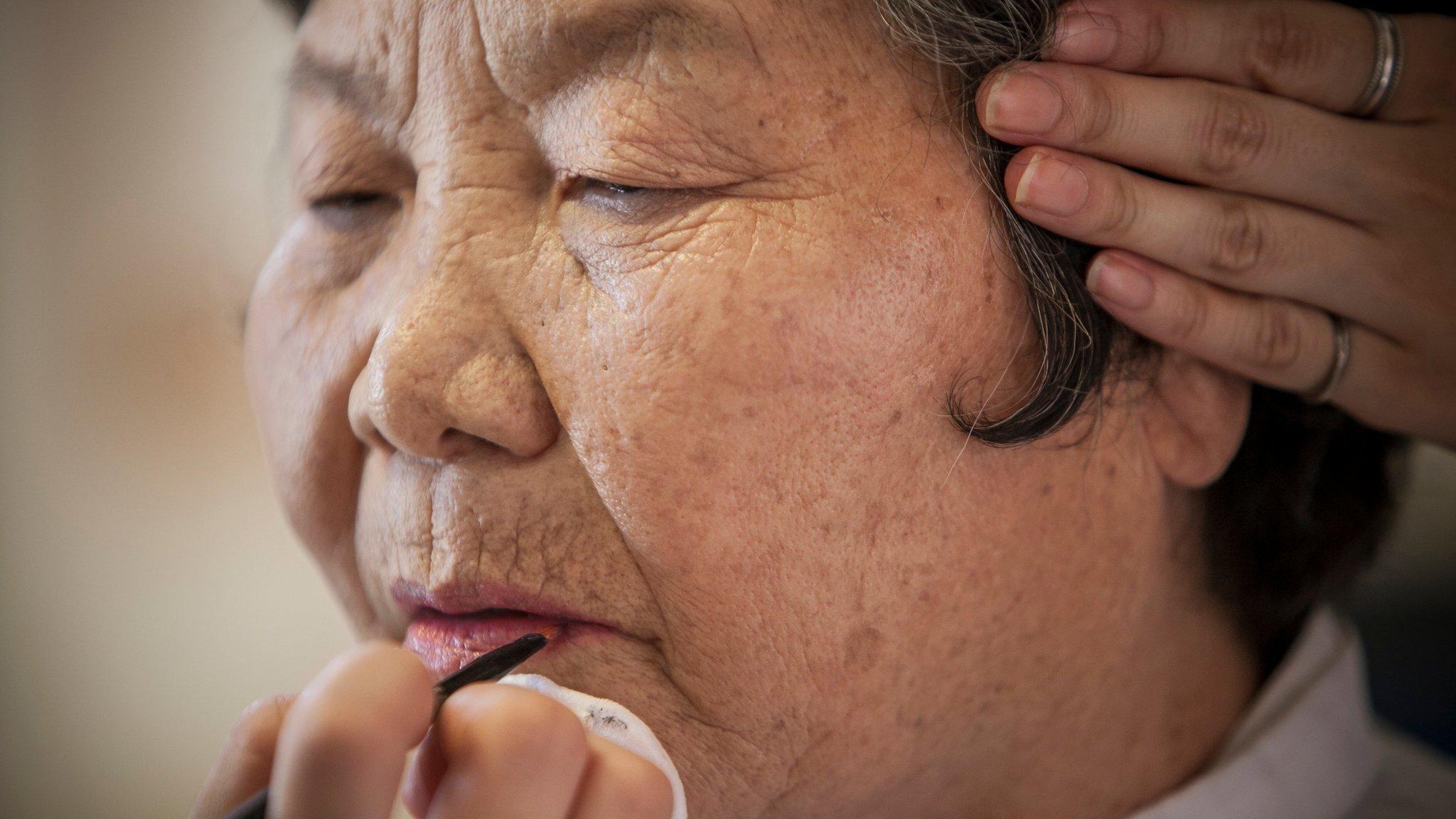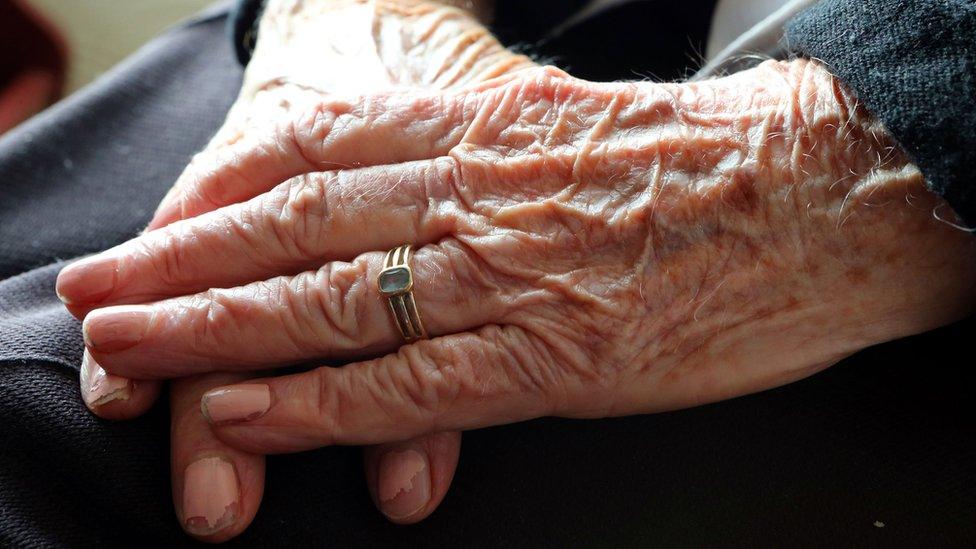Pensioners' life expectancy falls back
- Published

The average life expectancy of men and women at the age of 65 has fallen in the past three years, suggests data published by the actuarial profession.
Updated projections from the Institute and Faculty of Actuaries suggest that men aged 65 will now live another 22.2 years, down from 22.8 years in 2013.
Women aged 65 will now live for a further 24.1 years, down from 25.1 years in 2013, the actuaries say.
The change is due to lower expectations of how much death rates will improve.
"Recent population data has highlighted that, since 2011, the rate at which mortality is improving has been slower than in previous years," the Institute explained.
"However, mortality is expected to continue to improve and there is significant uncertainty as to whether this will be at a slower rate than experienced in the first decade of this century," it added.
The actuarial profession bases its analysis - called the Continuous Mortality Investigation (CMI) - on the death statistics for England and Wales which are supplied by the Office for National Statistics (ONS), external.
For the past few decades there has been a very strong and well publicised improvement in life expectancy in the UK, both at birth and also at age 65, which is the most relevant age for pension schemes.
Improvement stalls
But that trend appears to have slowed down since 2011.
Stephen Caine, of the big actuarial firm Willis Towers Watson, said: "Until recently, mortality rates in the UK were falling at an impressive pace."
"Since 2011, these improvements have stalled [and] as the CMI notes, mortality rates in 2016 were about 11% higher than they would have been if the 2000-2011 trend had continued," he added.
The recent retreat in projected life expectancy has also been recorded for other age groups.
For instance, the CMI data suggests that men aged 45 will now live a further 42 years (down from 43 years in 2013) and that women aged 45 will live for 44 years, down from 45.1 years in 2013.
A spike in deaths in early 2015 during an influenza outbreak provoked some speculation that death rates might in fact start rising for some older age groups.
But Tim Gordon, a spokesman for the CMI, stressed that the changes to life expectancy projections were not due to a deterioration in mortality rates, but simply due to using less optimistic assumptions about how fast those death rates would improve in the future.
However, another actuarial firm, Mercer, pointed out that a spike in winter deaths had continued in recent years.
It said that more than 140,000 people, aged 65 or more, had died in the winter of 2016-17.
That was 11% more than the 126,000 who died in the winter of 2015-16, with the number respiratory-related deaths up by 21%.
But the firm's spokesman, Glyn Bradley, said the long-term trend was still likely to be one of greater longevity.
"Medical research, application of past breakthroughs, innovative use of technology and potential for lifestyle improvements all mean that lifespans will continue to increase," he said.
- Published24 March 2017

- Published22 March 2017

- Published28 February 2017

- Published22 February 2017

- Published11 December 2015
